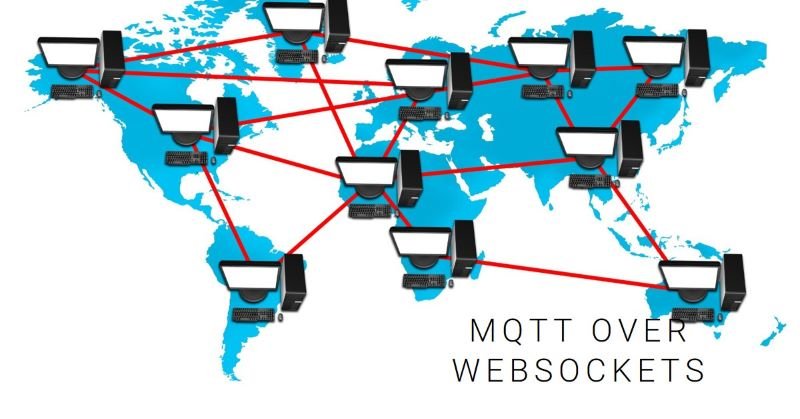Introduction:
In the constantly changing world of the Internet of Things (IoT), easy and effective connection among gadgets is crucial. The Message Queuing Telemetry Transport (MQTT) method is one tech tool gaining a lot of attention in the IoT space. To boost its potential, MQTT via WebSockets has stepped up as an impressive fix. It provides instant, two-way communication that’s both easy-to-use and flexible.
Understanding MQTT:
MQTT, a lightweight print-write-to-write messaging protocol, is designed for constrained environments and networks with low bandwidth, high latency or unreliability. It operates on a client-server architecture, where clients are connected to a broker to facilitate the exchange of messages between them.
Key features of MQTT include:
- Publish-Subscribe Model: MQTT employs a publish-subscribe model where clients (publishers) send messages to topics, and other clients (subscribers) receive messages from specific topics of interest.
- Quality of Service (QoS): MQTT supports three levels of QoS – 0 (At most once), 1 (At least once), and 2 (Exactly once), allowing users to choose the level of reliability and delivery assurance.
- Last Will and Testament (LWT): MQTT enables clients to specify a “last will” message, which the broker will send to a specified topic if the client unexpectedly disconnects.
MQTT over WebSockets:
WebSockets, in contrast, are a method of exchanging information that allows two-way communication streams through one continued connection. This is different from the traditional HTTP. WebSockets allow quick and immediate communication. This is great for programs that need constant data updates.
Combining MQTT with WebSockets offers several advantages:
- Bi-Directional Communication: WebSockets provide a full-duplex communication channel, allowing both the client and the server to send messages independently. This bidirectional nature complements MQTT’s publish-subscribe model, enabling real-time updates and notifications.
- Cross-Origin Communication: WebSockets can be used across different domains, overcoming the restrictions imposed by the same-origin policy. This is crucial for IoT applications where devices and services may reside on different servers.
- Reduced Latency: The persistent connection established by WebSockets reduces the overhead associated with connection setup, resulting in lower latency compared to traditional HTTP polling.
- Firewall-Friendly: WebSockets typically use the standard ports 80 (HTTP) and 443 (HTTPS), making it firewall-friendly and easily accessible through most network configurations.
Implementation:
Implementing MQTT over WebSockets involves establishing a WebSocket connection to the MQTT broker, and subsequently, exchanging MQTT messages over this connection. Many MQTT brokers support WebSocket connections out of the box, simplifying the integration process.
Use Cases:
- Real-time IoT Applications: MQTT over WebSockets is well-suited for real-time IoT applications, where devices need to communicate instantaneously for monitoring, control, and data exchange.
- Live Dashboards: Applications that require live updates and dashboards, such as financial tickers, live chat applications, or collaborative editing tools, can benefit from the low-latency nature of MQTT over WebSockets.
- Cross-Platform Communication: As WebSockets work across different domains, MQTT over WebSockets is ideal for scenarios where devices and services are hosted on separate servers.
Conclusion:
Taking MQTT over WebSockets, we’re looking at a pairing of superior communication tools. It supplies a solution that’s not only lightweight but can also expand smoothly for applications that operate in real-time. It’s strong because it can tackle two-way communication, scenarios that cross origin, and updates with minimal delay. This makes it worthwhile in the evolving world of IoT and applications that work in real-time. As we see tech move forward, we’re likely to witness MQTT over WebSockets guiding the way for uninterrupted and prompt communication in the future.

